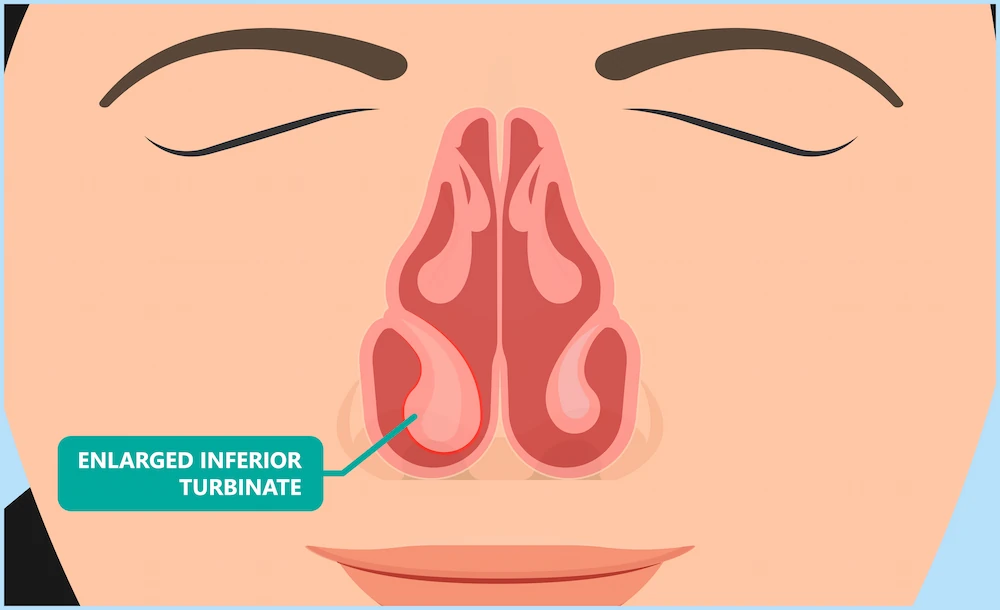Blog
What Are Nasal Turbinates?

When it comes to our breathing, the nose is a sophisticated structure that does much more than smell. It filters, warms, and humidifies the air we breathe, ensuring that what reaches our lungs is clean and suitable for oxygen exchange. A critical part of this process involves structures known as nasal turbinates. Dr. Shawn Allen, a Board-Certified Otolaryngologist (ENT) based in Houston, Texas, offers a deep dive into the world of nasal turbinates and their significant role in our nasal health through an informative video.
Read on and watch Dr. Allen’s video to learn more about these vital structures and their impact on breathing.
Understanding Nasal Turbinates
Nasal turbinates, or nasal conchae, are long, narrow shelves of bone that protrude into the nasal cavity, lined with a thick mucosal layer. There are three pairs of turbinates in each nostril: the inferior, middle, and superior turbinates. Their primary role is to filter, warm, and humidify the air as it passes through our noses into our lungs. While all turbinates are important, the inferior turbinates are the largest and most likely to impact breathing due to their size and location.
The Impact on Nasal Breathing
The size and condition of the turbinates can significantly affect nasal airflow. When the turbinates are swollen or enlarged (hypertrophied), they can obstruct the nasal passages, leading to difficulties in breathing, congestion, or nasal obstruction. Various factors can cause turbinate hypertrophy, including allergies, infections, and environmental irritants.
Diagnosing Turbinate Hypertrophy
Identifying enlarged turbinates as the cause of nasal obstruction involves a comprehensive evaluation by an experienced ENT specialist like Dr. Allen. The diagnostic process may include a physical exam, nasal endoscopy, and imaging tests like CT scans. These methods help determine the extent of turbinate hypertrophy and its impact on nasal airflow and congestion.
Treatment Options
For those suffering from persistent nasal congestion due to turbinate hypertrophy, Dr. Allen may recommend inferior turbinate reduction surgery, or turbinoplasty. This procedure aims to reduce the size of the turbinates, improving nasal airflow. Dr. Allen utilizes several techniques for turbinate reduction, including endoscopic methods, ensuring minimal discomfort and recovery time for patients. The choice of technique depends on the individual’s specific condition and needs, with each option discussed in detail during the consultation.
Breathe Easy: Explore Your Path to Better Nasal Health
Nasal turbinates play a crucial role in our respiratory health, acting as the first line of defense and conditioning the air we breathe. Understanding their function and the impact of turbinate hypertrophy on breathing can help individuals recognize when to seek medical advice.
Dr. Shawn Allen’s expertise in diagnosing and treating nasal and sinus conditions, including turbinate hypertrophy, offers a beacon of hope for those struggling with persistent nasal symptoms. If you experience chronic nasal congestion, sinus pain, or other related symptoms, don’t hesitate to contact Dr. Allen’s clinic in Houston or The Woodlands, Texas for a consultation. Taking the first step towards diagnosing and treating turbinate issues can lead to significant improvements in your breathing and overall quality of life.